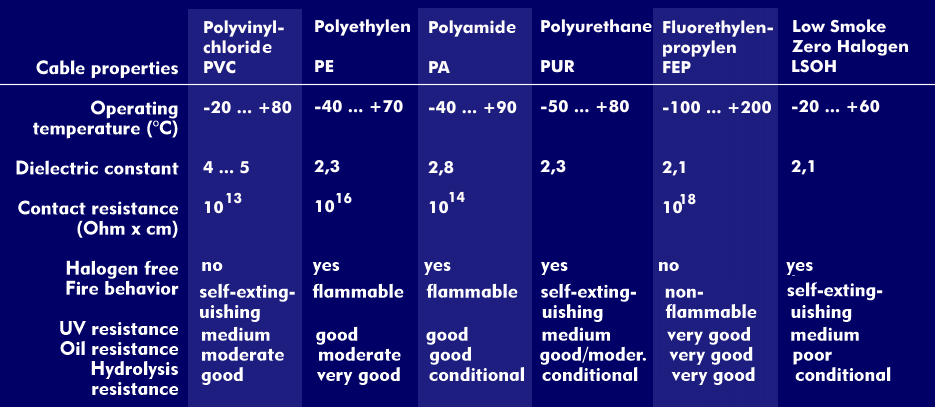polyethylene (PE)
Polyethylene(PE) is a plastic material used as insulation material and for the dielectric and cable sheaths of outdoor cables. Polyethylene has a low dielectric constant or permittivity and a low loss factor and is used in high quality cables.
Polyethylene is Flame Retardant Non and produces toxic gases when ignited. Compared to Flame Retardant Non Corrosive( FRNC), polyethylene offers protection against cross water diffusion, which allows it to be used in wet areas.
Polyethylenecables can be used in temperatures ranging from -40°C to +70°C. UV resistance and abrasion resistance are good, but oil resistance is only moderate. Polyethylene absorbs little moisture and can be subjected to high tensile loads. The permittivity at 50 Hz is between 2.1 and 2.3 and the dielectric strength is 40 kV/mm.
There are several varieties of polyethylene:
Low-density poly ethylene (HDPE or PE- HD) or low- density rigid polyethylene. This is an insulating material for cables that carries the DIN/VDE designation 2Y. The temperature range is between -50 °C and +60 °C. High-pressure polyethylene (LDPE or PE- LD) or soft high-density polyethylene, which is also an insulating material for cables, has the DIN/VDE designation 2Y. The application range is between temperatures of -50 °C to +90 °C. Linear Low D ensity Polyethylene (PE-LLD or LLDPE). Cross-linked polyethylene (PE-V) carries the DIN/VDE designation 2X. Cellular polyethylene (cellular PE) has the DIN/VDE designation 2Y, polyethylene terephthalate( PET) is designated 12Y, and ethylene vinyl acetate( EVA) is designated 4G. High-molecular-weight rigid polyethylene (PE-HMW) is extremely cold-resistant.

